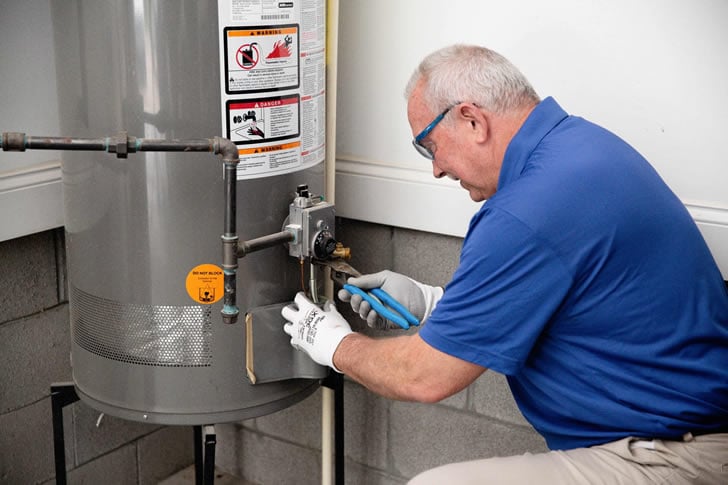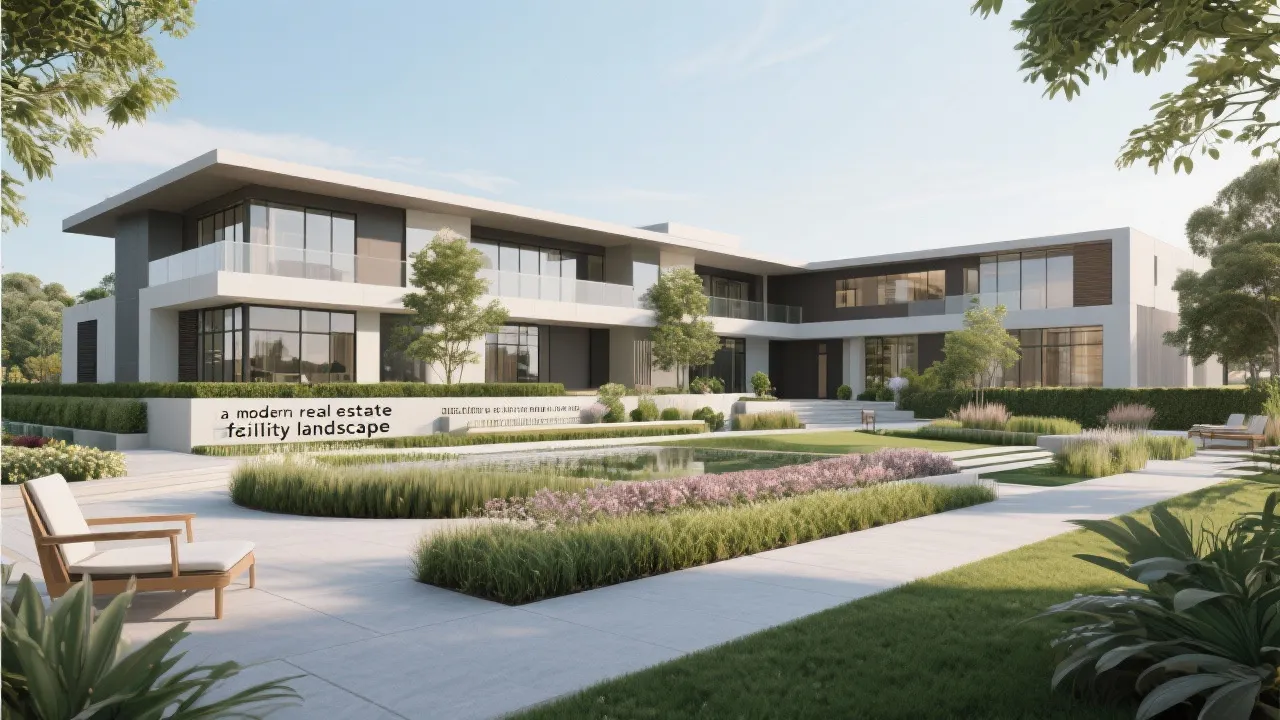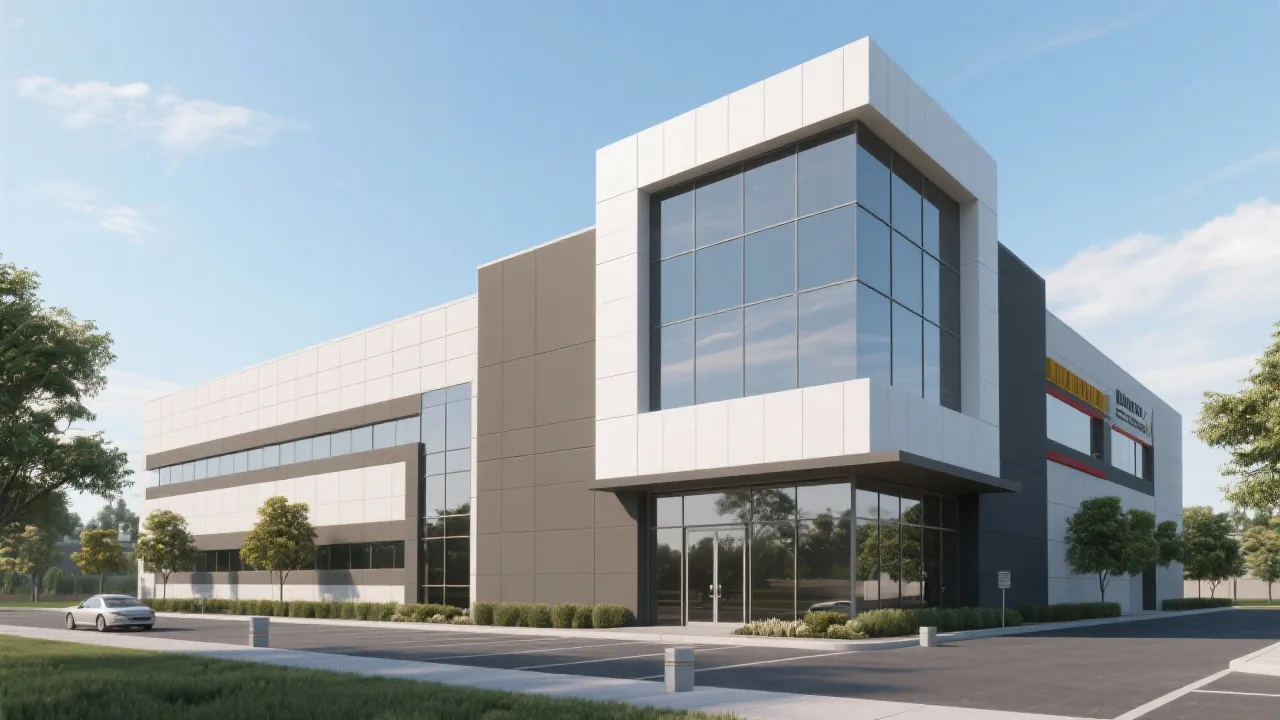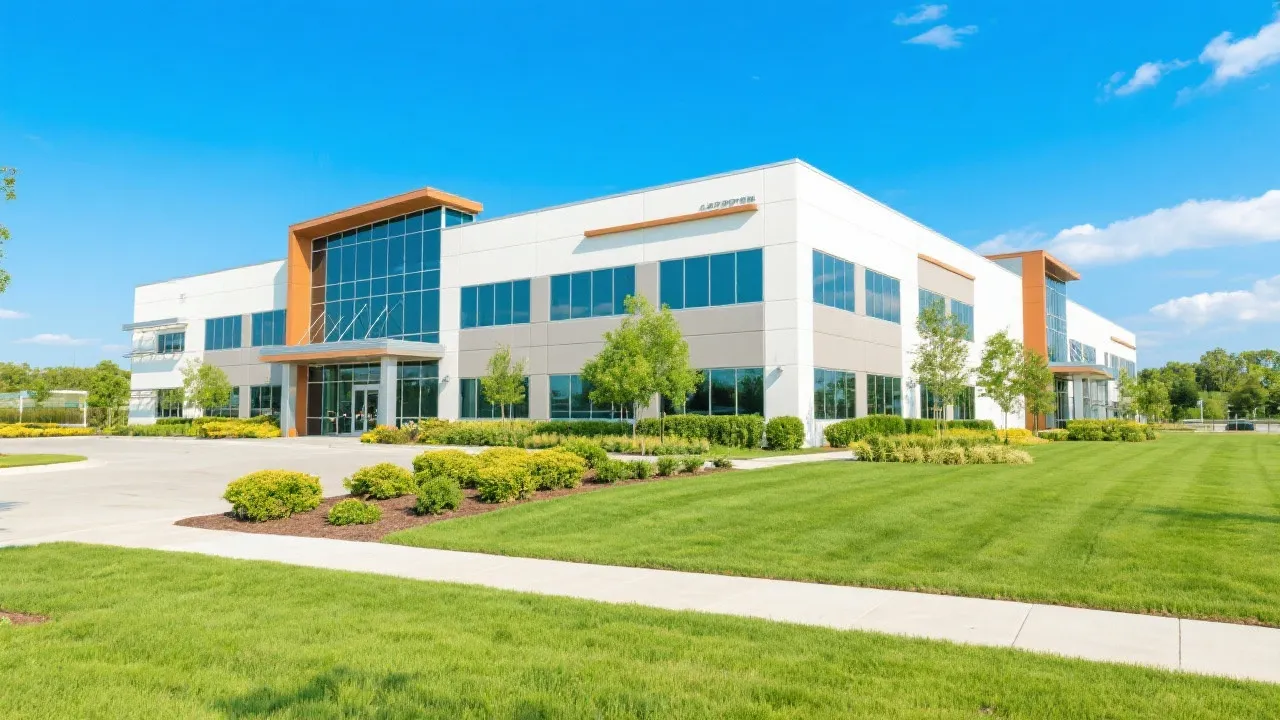Understanding Facility Realty's Impact
Facility Realty is an essential component of commercial real estate, involving the leasing, management, and development of buildings tailored for specialized uses such as offices, warehouses, and research centers. It's crucial in optimizing an organization's operational efficiency and strategic positioning. The market trends, challenges, and top practices associated with Facility Realty are integral for businesses planning expansions or relocations.
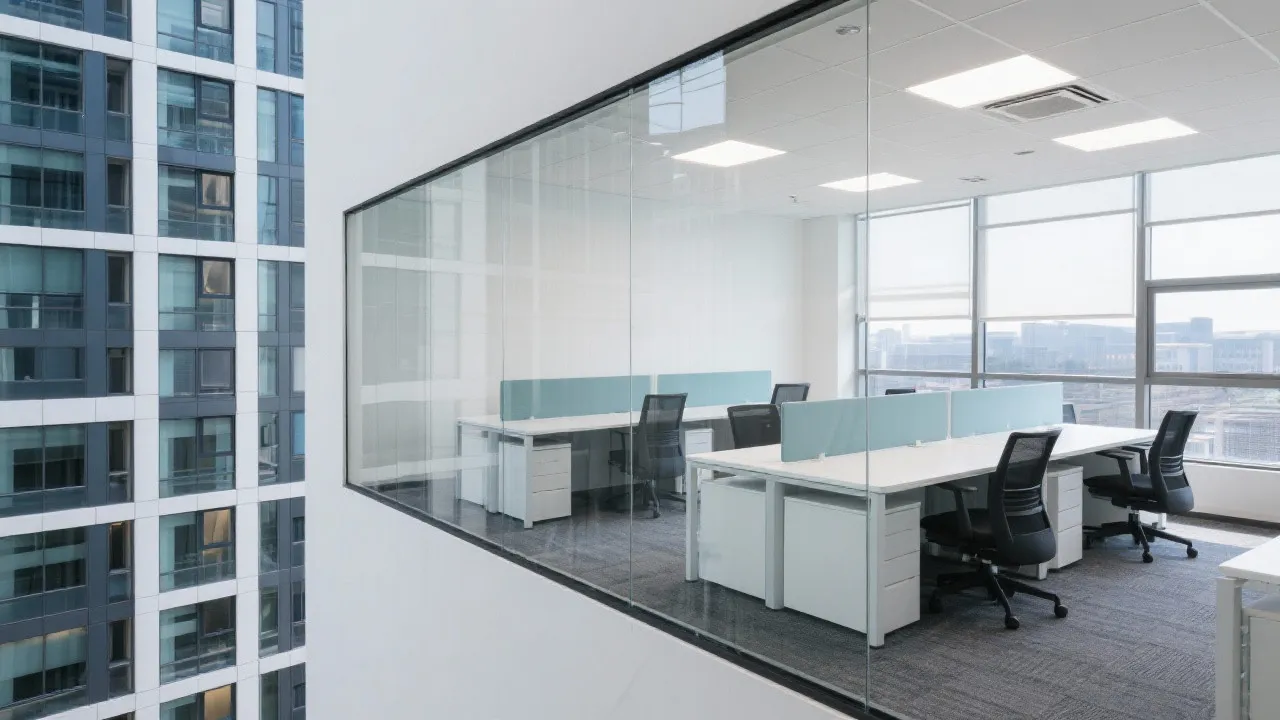
Introduction to Facility Realty
Facility Realty encompasses the specialized management, leasing, and development of real estate properties tailored for specific business needs. This sector is vital for organizations seeking to optimize their operational base, whether it pertains to office spaces, industrial warehouses, or technology research centers. By investing in Facility Realty, companies can ensure they have the necessary infrastructure to support their strategic goals and operational efficiency.
The scope of Facility Realty is broad, covering a diverse range of property types and functions. This includes not only traditional workspace configurations but also specialized properties such as data centers, laboratories, manufacturing plants, and distribution centers. Each of these facilities has distinct requirements and operational mandates, contributing to the complexity and specialization found within the Facility Realty sector. Accordingly, effective management and development practices must be employed to cater to the unique attributes of each property type.
The Role of Facility Realty in Business Strategy
Businesses increasingly recognize the importance of Facility Realty in their good strategy. A well-chosen facility can enhance productivity, foster innovation, and support scalability. For instance, a well-located office space can attract talent and reduce commute times, which positively impacts employee satisfaction and productivity. Moreover, an environment that promotes collaboration and creativity can lead to innovative ideas and solutions, enhancing a company's competitive edge.
In addition, incorporating flexibility, such as co-working spaces or adaptable layouts, can provide a buffer against market volatility or changing business needs. With the rise of remote work and hybrid work models, organizations may find themselves shifting requirements for their physical spaces. Dynamic configurations allow companies to adapt without incurring substantial costs or disruptions. By aligning Facility Realty strategies with overall business objectives, organizations can create spaces that are not only functional but strategic in facilitating growth and development.
Furthermore, the ability to leverage data and analytics in managing and optimizing real estate portfolios can provide insights that align facility decisions more closely with organizational goals. With advanced analytics, companies can assess employee performance relative to workspace characteristics, enabling adjustments that can lead to further improvements in productivity and employee engagement. Various metrics, such as occupancy rates, employee satisfaction surveys, and operational costs, should be integrated into an overarching strategy to provide a comprehensive view of how facilities support business outcomes.
Current Market Trends
Recent trends in the Facility Realty market highlight a shift towards sustainable and smart buildings. With increasing environmental concerns, companies are prioritizing eco-friendly facilities that reduce carbon footprints and operational costs. The focus on sustainability includes the implementation of energy-efficient systems, the use of renewable resources, and designs that promote natural light and green spaces. Companies are also making conscientious efforts to minimize waste during construction and operation, such as using sustainable materials and ensuring proper recycling protocols are in place.
Additionally, the integration of technology such as IoT (Internet of Things) allows for better energy management, security enhancements, and predictive maintenance, making facilities more efficient and cost-effective. Smart buildings equipped with sensors and connected devices create environments that not only offer advanced security features but also allocate resources more intelligently. For instance, IoT-enabled monitoring systems can adjust lighting, heating, and cooling based on occupancy, resulting in significant energy savings.
Artificial intelligence (AI) and machine learning are also making waves in Facility Realty by analyzing vast amounts of data to optimize space utilization and predict maintenance needs. Such predictive analytics can help prevent breakdowns and reduce downtime, contributing to overall organizational efficiency. Moreover, the rise of telecommuting and flexible work arrangements has sparked an increased demand for adaptable and multi-functional spaces. Organizations are seeking to design environments that can serve multiple purposes, transitioning effortlessly from collaborative spaces to quiet zones as required by employee activities.
Furthermore, the post-COVID-19 landscape has catalyzed an evolution in workspace design. Companies are reassessing their requirements based on newfound employee expectations and the necessity for social distancing. This has led to the incorporation of more open, flexible spaces that accommodate both collaborative and individual work preferences. Companies are investing in air quality improvements and advanced ventilation systems to ensure employee health and safety, a trend that is likely to persist even beyond the pandemic.
Challenges in Facility Realty
Despite the benefits, several challenges persist in the Facility Realty domain. One major issue is the rising cost of property in prime locations, which can strain budgets and limit expansion opportunities for smaller companies. The competitive nature of real estate markets often leads to bidding wars, particularly in urban areas where businesses see strategic advantages from being located near talent pools and their customer base. In addition to direct costs, higher property costs can also impact related expenses such as taxes, insurance, and maintenance, further stretching financial resources.
Additionally, navigating the complex regulatory landscape related to zoning, environmental standards, and building codes requires expertise and can delay projects, impacting organizational plans. The process of obtaining necessary permits and approvals can be lengthy and fraught with challenges, particularly in highly regulated areas. Companies must be prepared to invest time and resources into understanding local regulations and possibly engaging legal professionals to mitigate risk and ensure compliance.
Furthermore, the need for technological integration presents a dual challenge. While the adoption of advanced technologies can lead to increased operational efficiency and improved facility management, it demands a level of investment in infrastructure and training that some organizations may find daunting. The rapid pace of technological change can also create uncertainty about the longevity of certain solutions, prompting organizations to carefully assess the long-term viability of their tech investments.
Finally, maintaining flexibility in facility design and investment strategies is crucial yet increasingly complex. As market demands shift and workplace dynamics evolve, businesses must remain agile and ready to respond to external pressures effectively. Failure to adapt can leave organizations with underutilized or outdated facilities that do not meet the needs of their workforce or align with their strategic direction. Therefore, continuous reassessment and realignment of facility strategies with business goals are essential components to navigate the ever-changing landscape of facility realty.
Top Practices for Engaging with Facility Realty
To successfully integrate Facility Realty into business operations, companies should adopt several top practices. Strategic planning, which aligns facility needs with good business goals, is crucial. An initial step involves conducting a thorough assessment of current and future needs, considering factors like employee headcount, technological requirements, and potential growth. Engaging experienced real estate consultants can provide valuable insights into market conditions, potential risks, and opportunities. By leveraging expert knowledge, organizations can make informed decisions that positively impact their real estate investments.
Moreover, incorporating flexibility into facility designs can aid in adapting to future business shifts without significant resource outlays. This may include designing multifunctional spaces, investing in movable partitions, and utilizing modular furniture to foster an adaptable environment. Companies should also conduct regular reviews of their space utilization to identify opportunities for reconfiguration that can enhance collaboration and productivity according to evolving workforce needs.
Additionally, it is imperative for organizations to establish a continuous feedback loop with their employees regarding workplace experience and effectiveness. Surveys and focus groups can uncover valuable insights into how employees utilize spaces and identify areas where enhancements can lead to improved satisfaction and performance. Ultimately, placing employee needs at the forefront of facility decision-making will contribute to a healthier workplace culture.
Investing in technology that supports data-driven facility management can further streamline operations. Software platforms that allow for centralized management of various facility functions—such as maintenance requests, space scheduling, and performance analytics—can help organizations respond more quickly to issues and opportunities. As technology evolves, staying informed of new innovations and adopting relevant tools can significantly enhance a company's operational capabilities.
| Factor | Consideration |
|---|---|
| Location | Assess proximity to clients, suppliers, and workforce talent pools, while considering the local market dynamics. |
| Space Utilization | Optimize layout to maximize efficiency and support the intended use, including flexible design for varied functions. |
| Technology Integration | Utilize smart technologies for energy efficiency, operational enhancements, and ease of management. |
| Regulatory Compliance | Ensure adherence to all relevant zoning and environmental laws, considering future regulatory trends. |
| Employee Engagement | Regularly gather feedback to improve workplace experience and align facility decisions with employee needs. |
| Data-Driven Decision Making | Use analytics and software tools to assess space utilization, efficiency, and identify areas for improvement. |
FAQs
What is Facility Realty?
It is a domain within commercial real estate focused on properties designed to meet specific organizational needs such as offices, warehouses, and labs, following a tailored operational approach.
How does Facility Realty benefit a business?
Choosing the right facility enhances productivity, supports strategic goals, and can offer good cost savings through efficient and sustainable practices. Moreover, it fosters an environment conducive to collaboration and innovation.
What are some emerging trends in Facility Realty?
The increasing emphasis on green buildings, smart technologies, flexible workspaces, and data-driven facility management are key trends shaping the market as organizations adapt to contemporary challenges.
What challenges might businesses face in Facility Realty?
High costs in prime locations, regulatory hurdles, maintaining flexibility to adapt to changes, and addressing the need for technological integration present common challenges. Organizations must navigate these complexities strategically to optimize their real estate outcomes.
Conclusion
Facility Realty plays a crucial role in shaping an organization's success by providing the infrastructure needed to execute its strategic vision. By keeping abreast of market trends, addressing potential challenges, and implementing top practices, businesses can maximize the value of their real estate investments. As the industry evolves, companies will need to remain agile, leveraging technological advancements and sustainability trends to maintain a competitive edge. Creating resilient and forward-looking facility strategies will be essential, ensuring organizations are well-prepared to navigate the next wave of challenges and opportunities in the realm of Facility Realty.
Furthermore, embracing collaboration not only within the organization but also with external stakeholders can enhance the effectiveness of facility management. This could include partnerships with local governments, environmental organizations, and technology providers to create innovative and responsible real estate practices. Stakeholder engagement can cultivate a more informed and responsive approach to property development and management, ultimately leading to better outcomes for both the organization and the community.
Ultimately, the journey through the evolving landscape of Facility Realty demands a commitment to continuous improvement and innovation, as organizations strive to create environments where both employees and businesses can thrive. The emphasis on sustainability, technology integration, and on emerging trends will further drive the future of this sector, establishing Facility Realty as an essential pillar of organizational success in the years to come.


